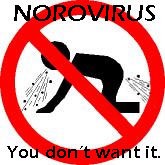For whatever reason – money – Chipotle investors and apologists are willing to look beyond the company’s many failings.
 If Chipotle really wanted to be a leader, they would have embraced microbiologically safe food and internal verification long before the 2015 outbreaks.
If Chipotle really wanted to be a leader, they would have embraced microbiologically safe food and internal verification long before the 2015 outbreaks.
If Chipotle really wanted to be a leader they’d stop playing to consumer fears with their advertising.
If Chipotle really wanted to be a leader, they would embrace genetically engineered foods that require fewer and far less harmful pesticides.
Chipotle is a follower, sucking up dollars wherever it can.
In its latest PR rah-rah stunt, Chipotle is going to close all of its 1,900 outlets on Feb. 8 for a few hours “for company executives to be transparent about the status of the E. coli outbreak, and what Chipotle is doing to prevent it from happening again.”
Chipotle’s stock price sits is currently down around 40% off its 52-week high, as the outbreak news hurt sales more than had been expected. The company has advised investors that it could be a few rocky quarters before Chipotle sees a definitive, positive improvement.
In an effort to bring back some of the customers it’s lost, Chipotle co-CEO Monty Moran said Wednesday it will be doubling the amount of free food restaurants can give away to its customers, reports CNBC.com.
The New York Times says, with a straight face, Chipotle’s new mantra is “Safe food, not just fresh” while gushing that, “From its start in 1993 as a burrito stand in Denver opened by a young Culinary Institute of America-trained chef who borrowed money from his parents, Chipotle now has more than 2,000 locations. Its stock nearly doubled over the last five years, and in August the company reached a market value of $23 billion.
 “Chipotle emphasizes fresh, locally sourced ingredients. It was the first major chain to reject genetically modified food. Chipotle has embodied the notion of doing well by doing good.”
“Chipotle emphasizes fresh, locally sourced ingredients. It was the first major chain to reject genetically modified food. Chipotle has embodied the notion of doing well by doing good.”
That’s not doing anyone any good.
It’s marketing BS.
Consumers aren’t so dumb or confused. Chipotle said same-store sales dropped a greater-than-expected 14.6 percent in the last quarter, and analysts have been scrambling to downgrade their ratings. On Tuesday, Chipotle shares dipped below $400 and were down 47 percent from the August high.
Two of the incidents, the one in Simi Valley, Calif., in August that sickened 234 people, and another in Boston in December, which affected at least 136 customers, were linked to a norovirus, a highly contagious virus that causes gastroenteritis. It is spread through contact with an infected person, a surface bearing the virus, or by contaminated food.
Chipotle has said both outbreaks were caused by sick employees who ignored strict policies prohibiting them from coming to work and, without elaborating, said that disciplinary measures were meted out to those responsible.
Anyone can say they have strict policies (Heston-norovirus-isn’t-my-fault Blumenthal comes to mind) but verification, that takes effort.
In August, 64 people were treated for salmonella after eating at a Chipotle in Minnesota. Fresh tomatoes were identified as the culprit.
Chipotle shares have jumped nearly 14 percent over the last two days after company executives gave an upbeat presentation to investors, bankers and analysts at the ICR investor conference in Orlando, Fla., where they predicted the brand would regain its luster and reiterated an aggressive expansion and growth plan.
Follow the money.











